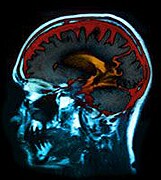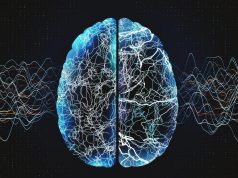Early life adversity linked to variation in brain structure directly and via internalizing symptoms
MONDAY, Aug. 17, 2015 (HealthDay News) — Early life adversity correlates with higher levels of internalizing symptoms and with altered brain structure, according to a study published online Aug. 17 in JAMA Pediatrics.
Sarah K.G. Jensen, from King’s College London, and colleagues examined the direct effects of early adversity and child internalizing symptoms (depression and anxiety) on cortical gray matter (GM) volume. They examined correlations between adversity within the first six years of life, internalizing symptoms in childhood and early adolescence (age 7 to 13 years), and altered brain structure in late adolescence (age 18 to 21 years). Data were included for 494 mother-son pairs monitored since the mothers were pregnant.
The researchers found that early adversity was directly associated with lower and higher GM volumes in the anterior cingulate cortex and precuneus, respectively (P = 0.01 and 0.009, respectively). There was a correlation for childhood internalizing symptoms with lower GM volume in the right superior frontal gyrus (P = 0.002). There was a correlation for early adversity with higher levels of internalizing symptoms (P < 0.001), which, in turn, correlated with lower superior frontal gyrus volume (P = 0.02).
“These findings may suggest that some of the structural variation often attributed to depression might be associated with early adversity in addition to the effect of depression,” the authors write.
Copyright © 2015 HealthDay. All rights reserved.








